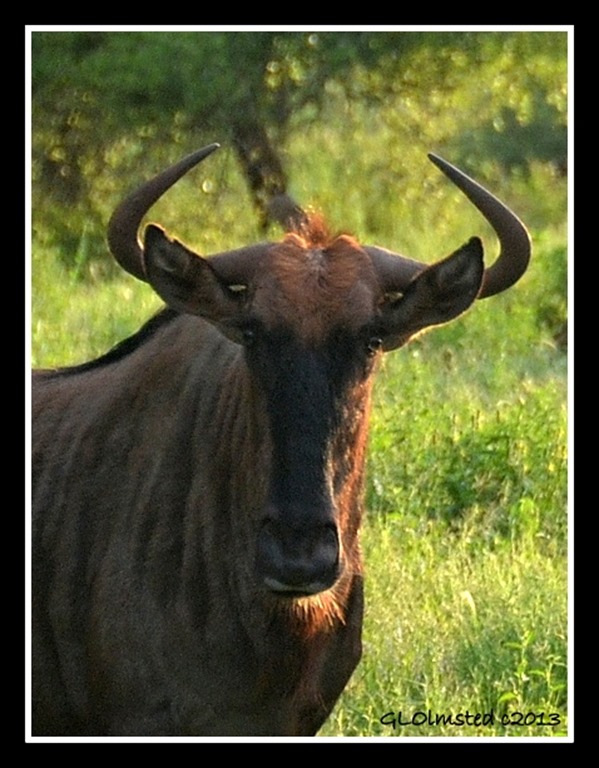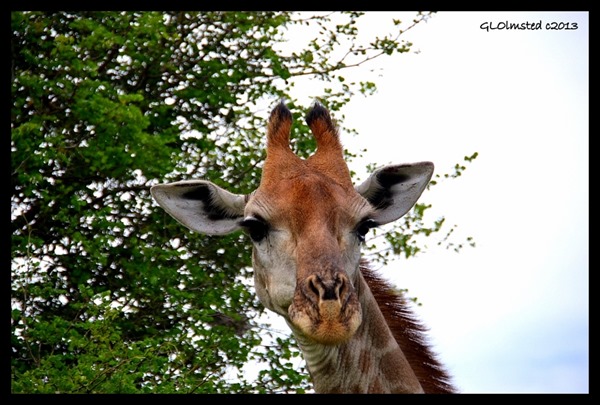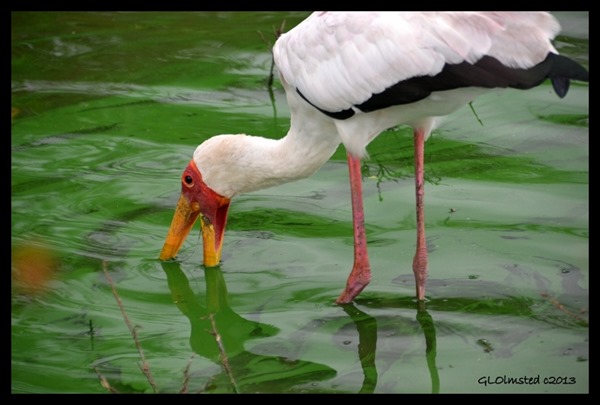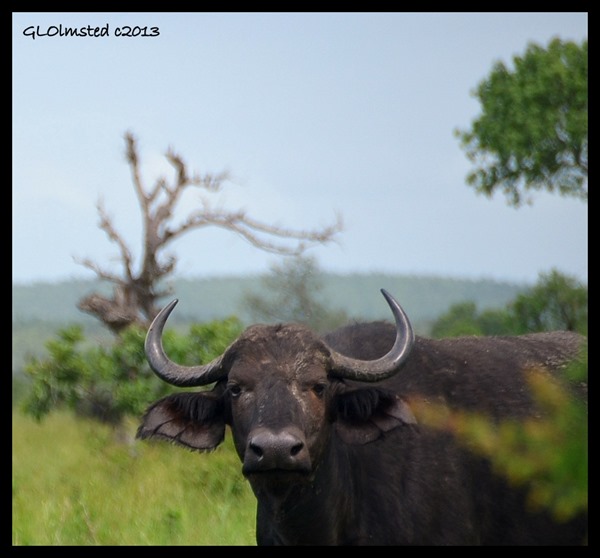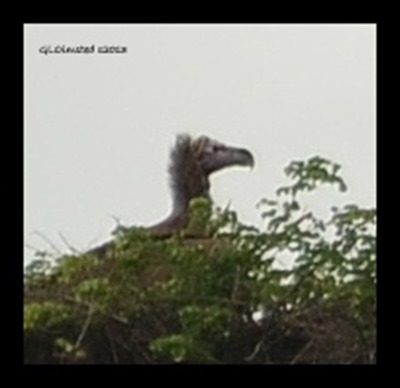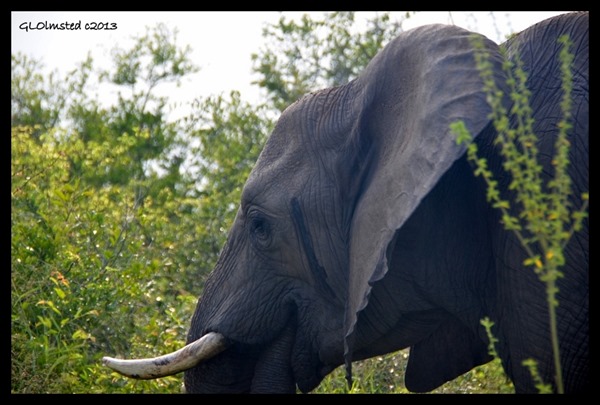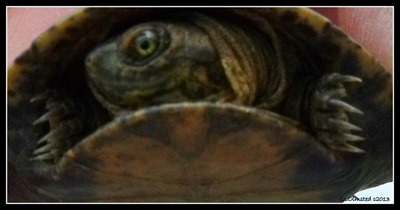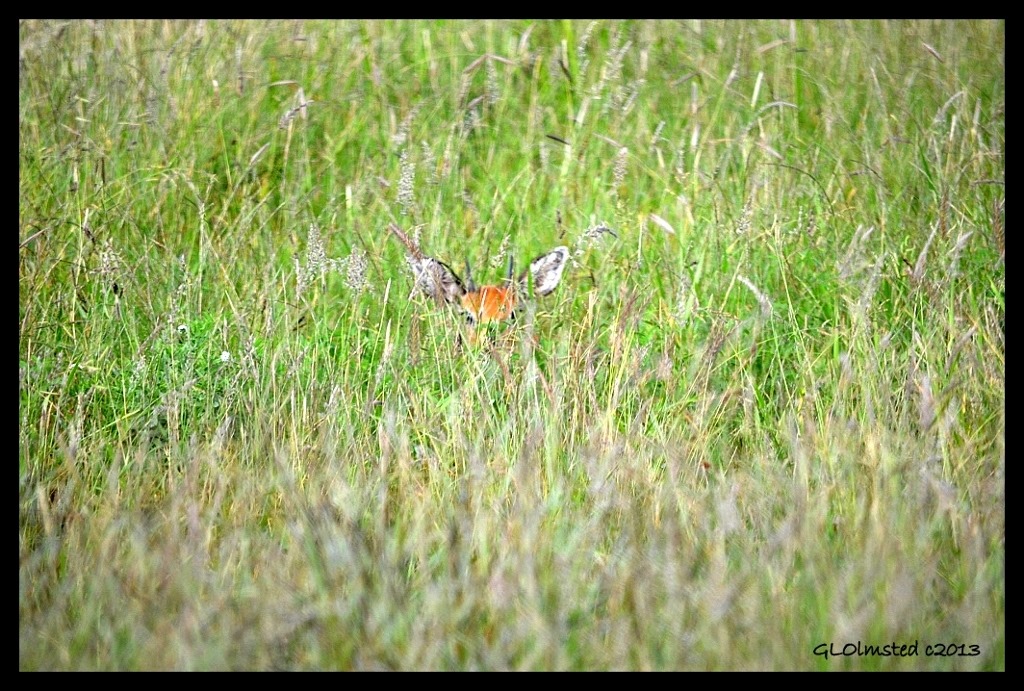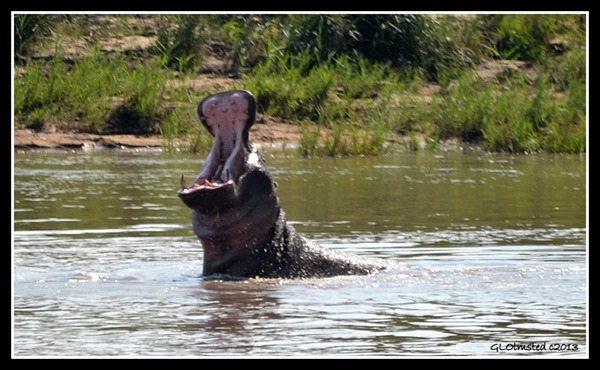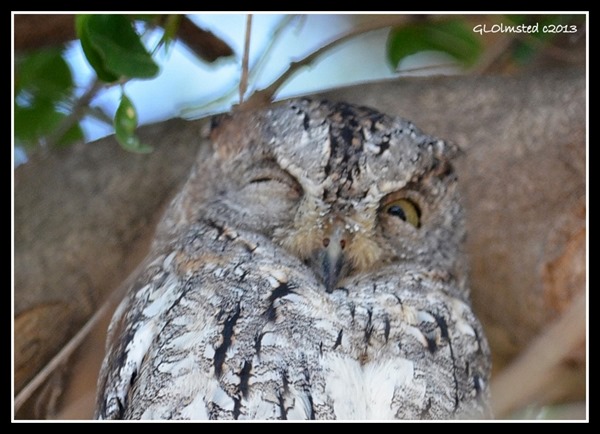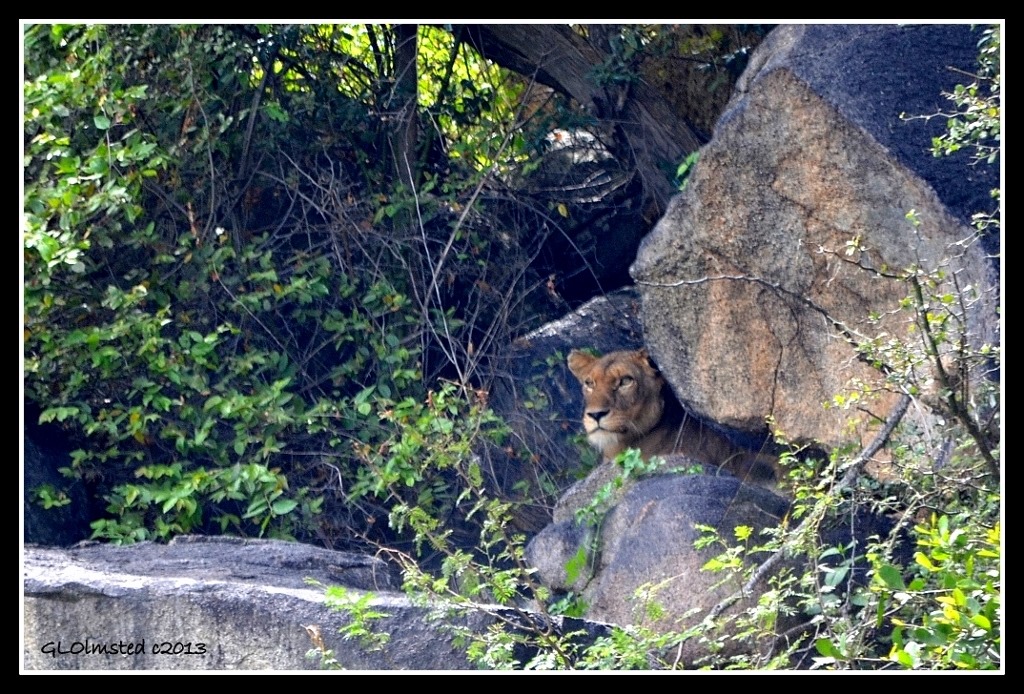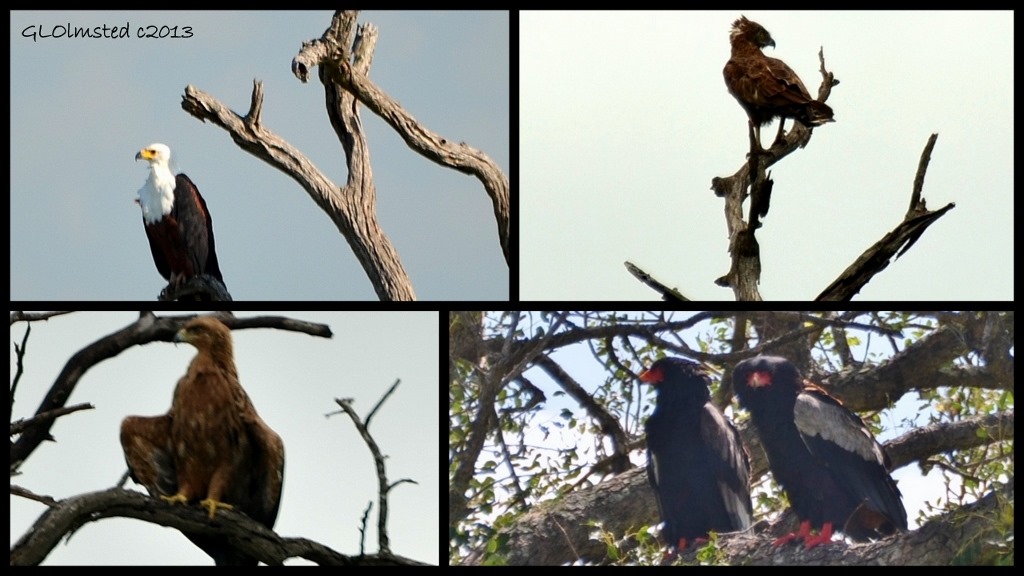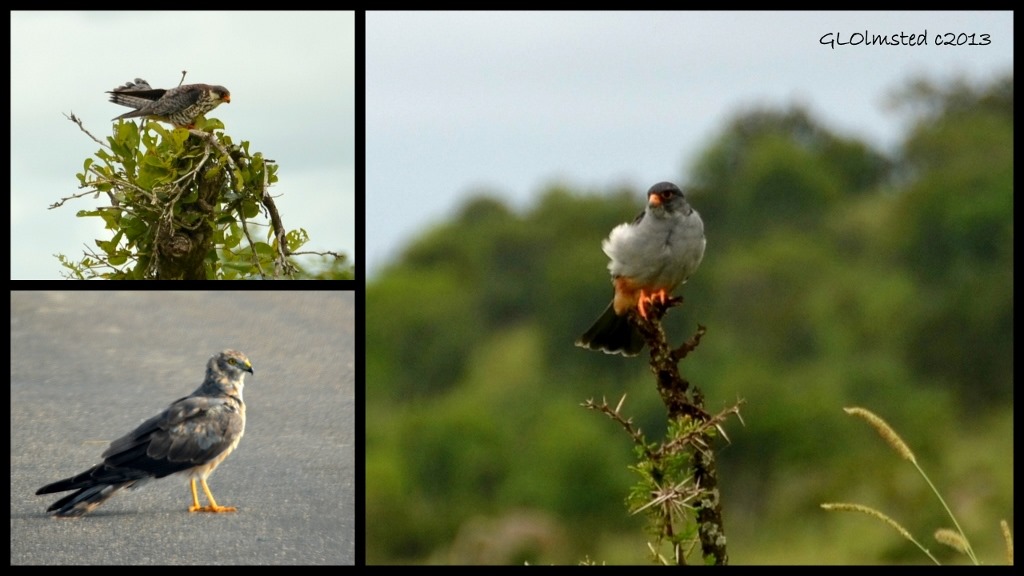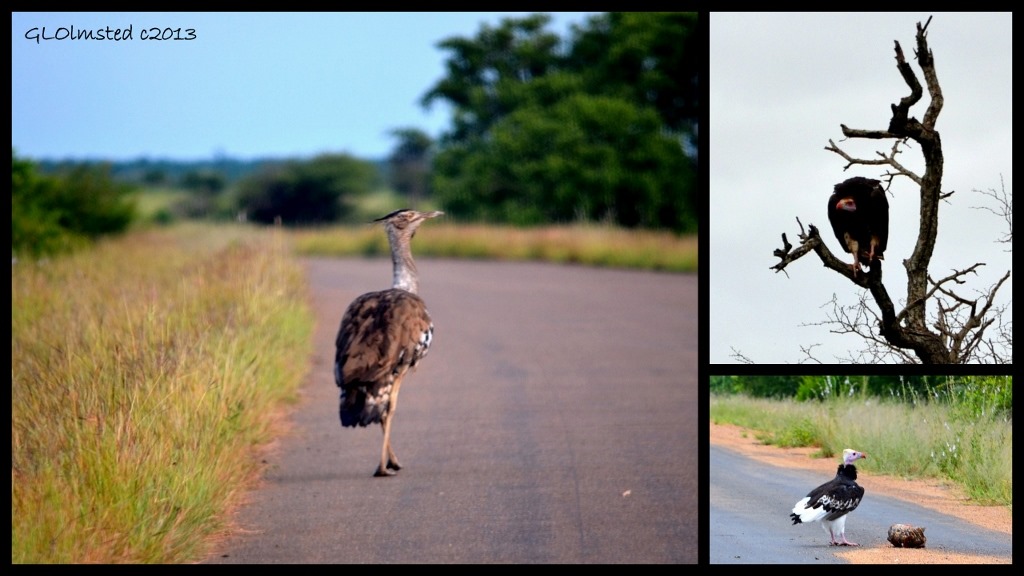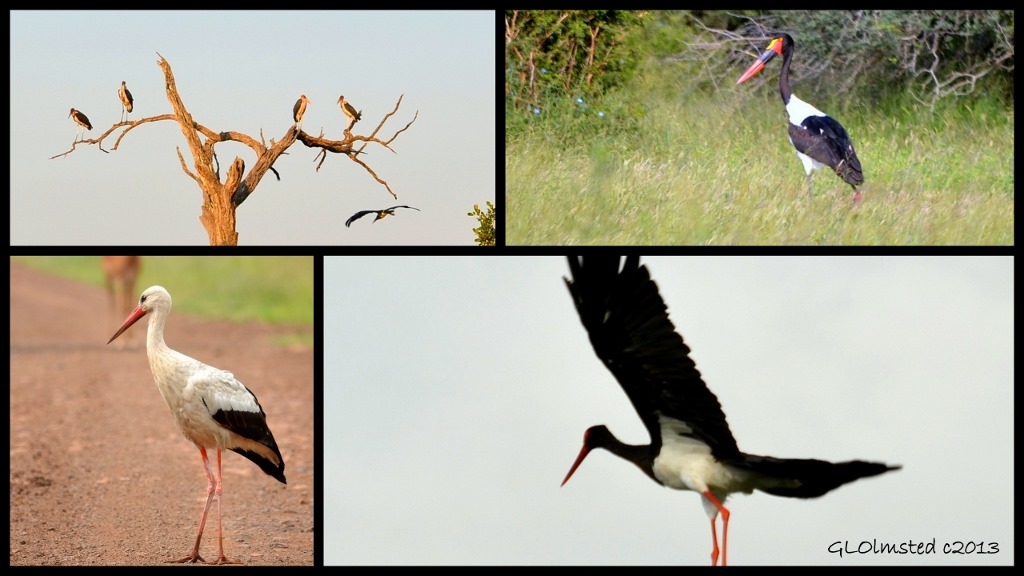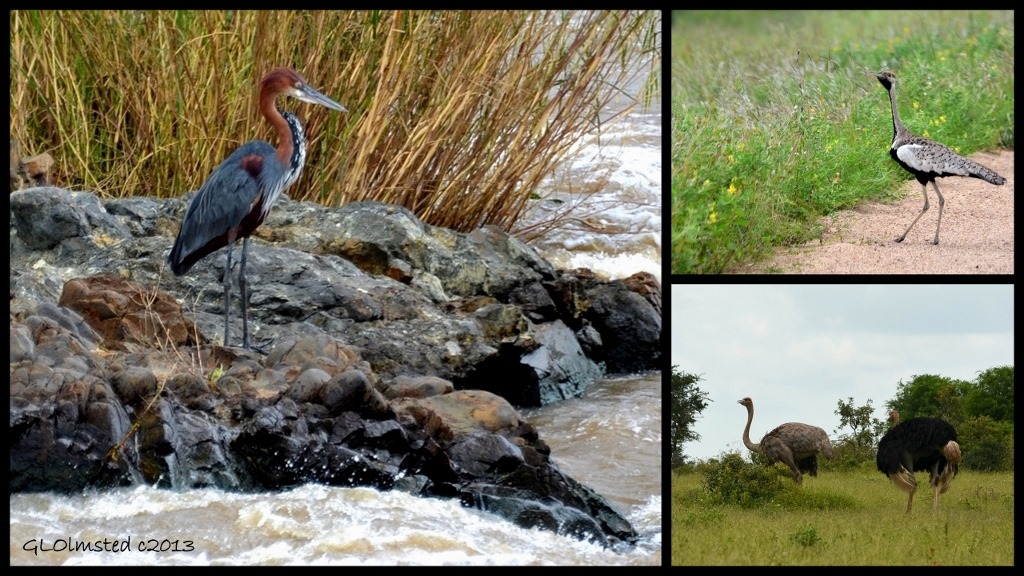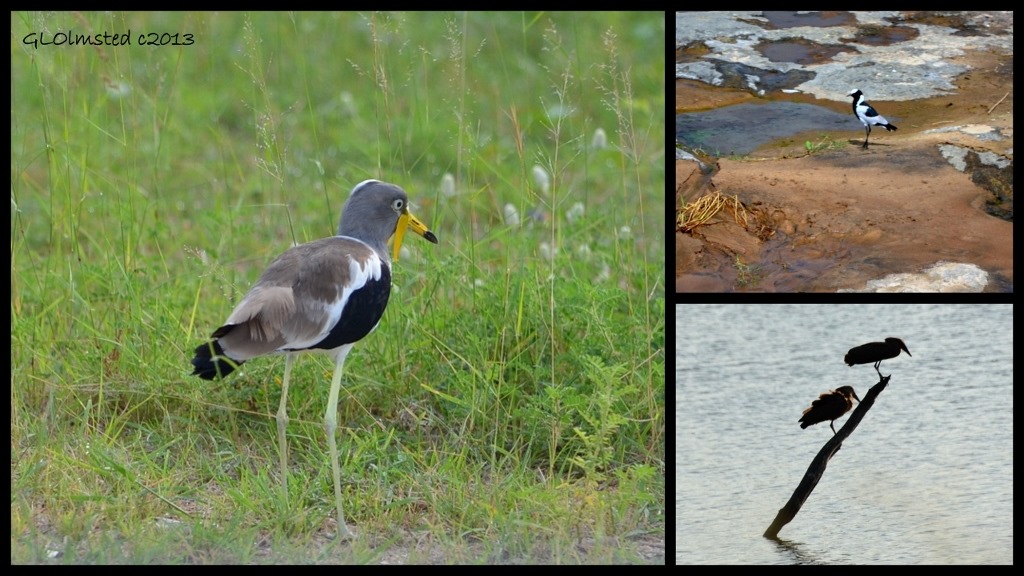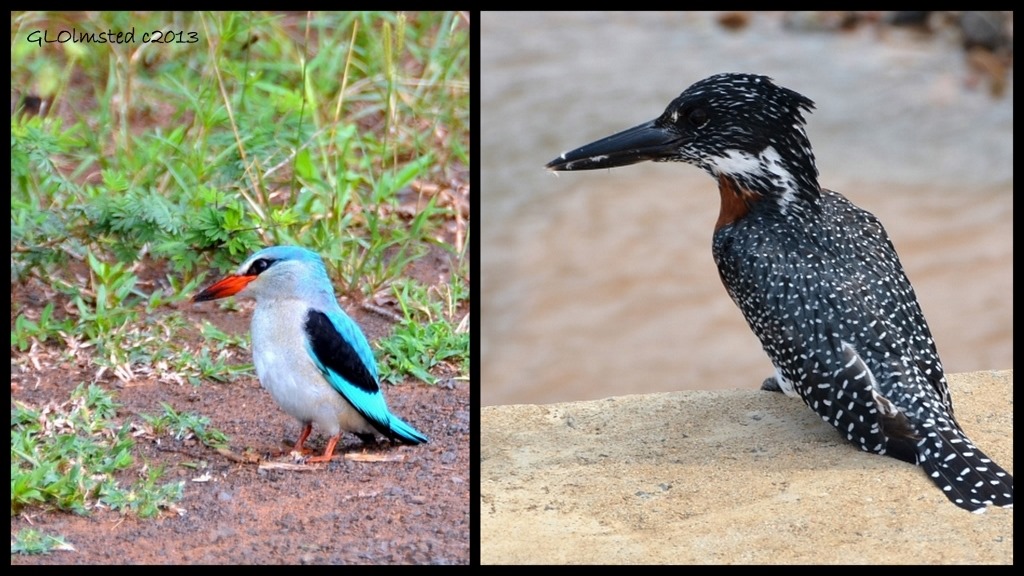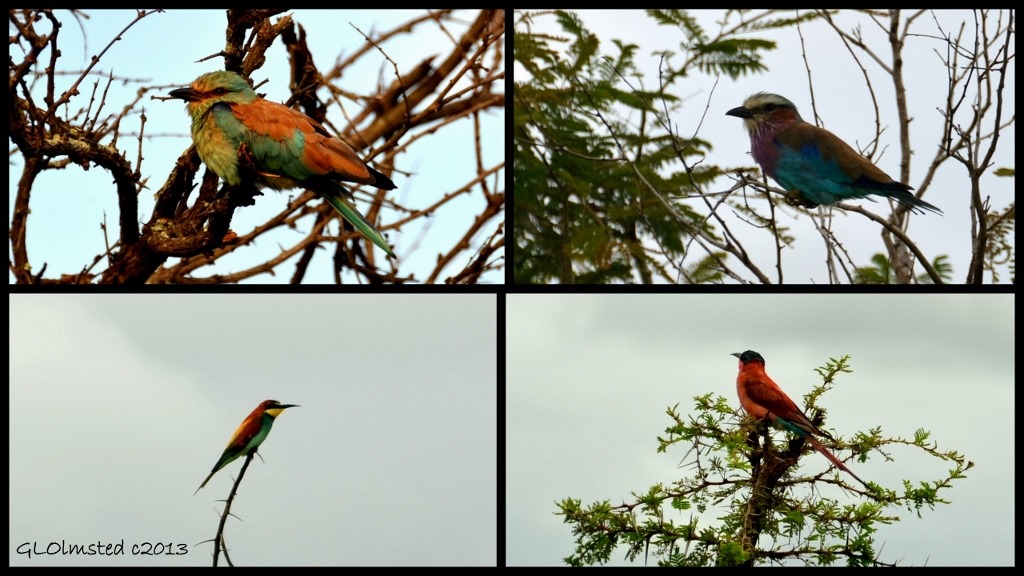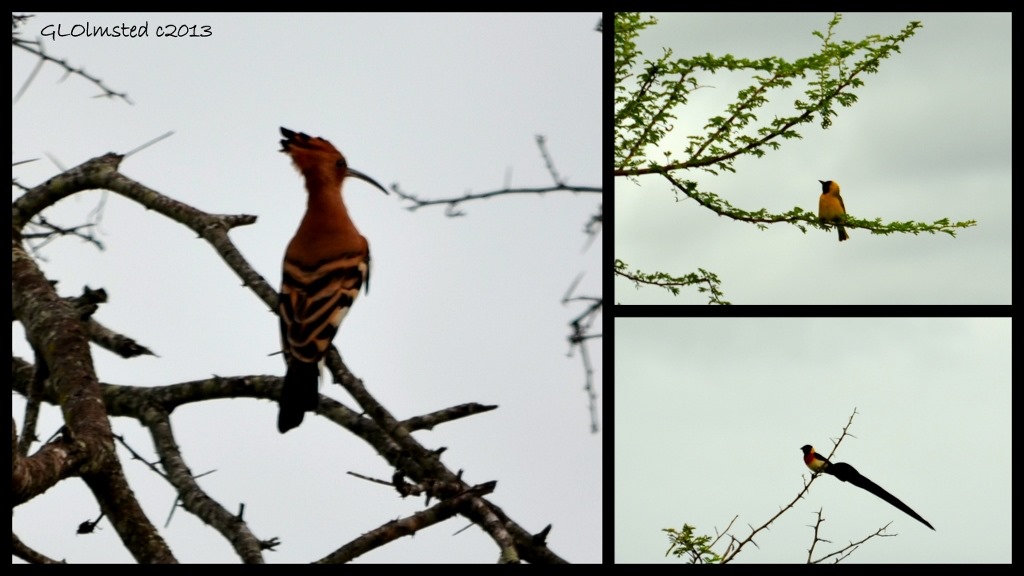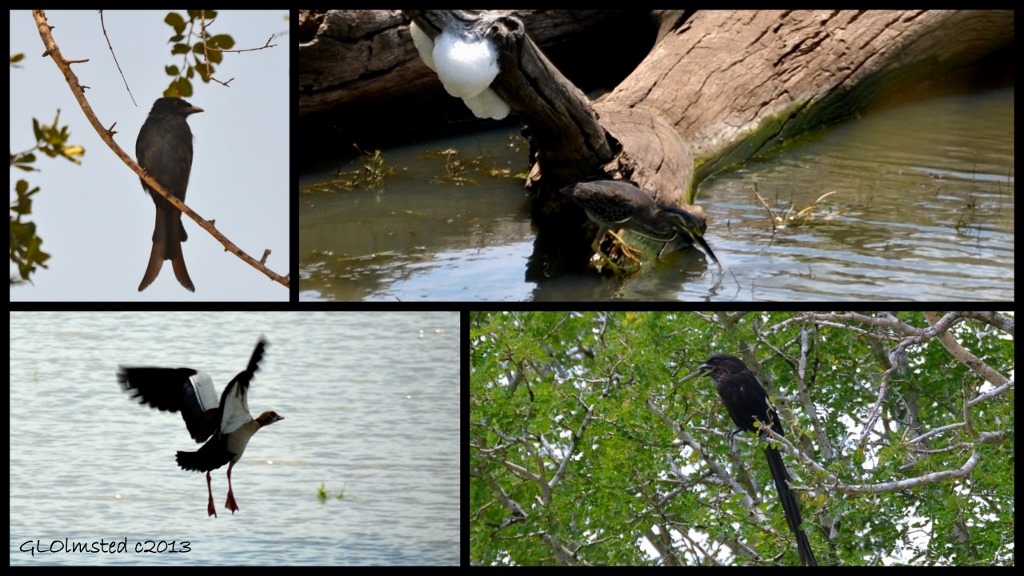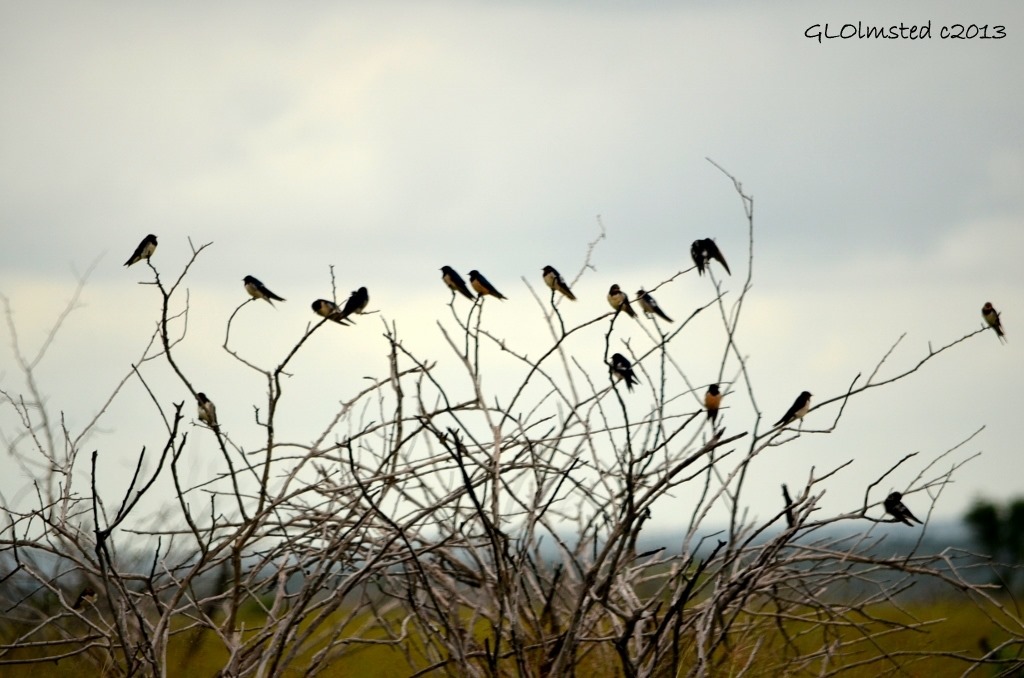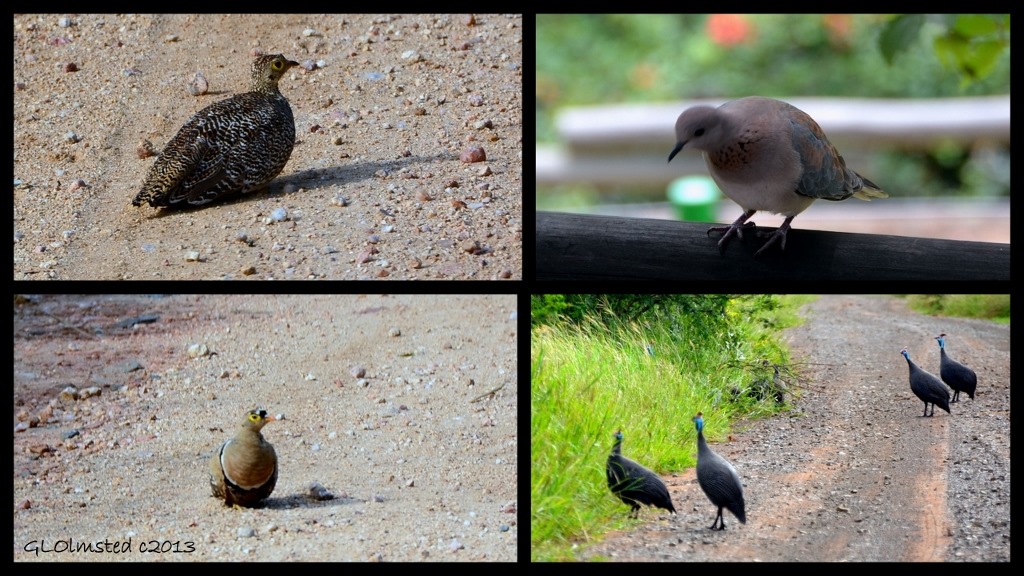While on safari a lot of animals are walking away as seen in the butt shots post. But not all, and some animals get quite close to the vehicle while others would require a 700mm lens to even see. Sometimes it’s like they are watching us. Maybe that’s because we’re in the cage, whatever vehicle, you must stay inside. A combination of still learning the Nikon D5100 camera and having to be quick meant an ‘Auto’ setting for most photos using either the 18-200 or 55-300 mm lenses.
Wildlife head shots
For one of my favorite photos from this Kruger safari scroll up to my header shot of the spotted hyena cubs. Mom might have been off hunting as these two curious cubs first played at the edge of the road before seeming to notice us watching then skedaddled into the tall grasses to semi hide. I just love the look on their faces.
135mm 1/250 f5.6 cropped
I think the Blue Wildebeest has an almost comical Bullwinkle look. Note the (parenthesis) shaped horns. This gal traveled in a herd with youngsters.
170mm 1/500 f5.6
Who can resist the giraffe’s big eyes and long eye lashes. With a 21 inch tongue I’m sure glad this one didn’t stick it out at me or lick the windows.
200mm 1/320 f5.6
Yellow-billed storks have a fishing technique of using one foot to stir up the water to flush out prey. Watched this one stir up the water for a while but didn’t see it catch anything.
200mm 1/500 f5.6 cropped
Buffalo are considered the meanest of the Big 5 this one looks half asleep but I wouldn’t trust that.
200mm 1/500 f5.6 heavily cropped
One of those really long shots, without a huge lens, of a vulture.
112mm 1/125 f5.6
Elephants are my favorite animal to watch. But I wouldn’t want to piss off this male in musth, note the liquid running down the side of the face. This happens during a time of sexual activity when they can be quite aggressive.
Fuji FinePix S1500 5.9mm 1/400 f5.0 heavily cropped
This terrapin seems to be giving us the eye. They pull their heads in sideways when threatened unlike tortoises which pull straight in. Note those claws for added protection.
300mm 1/250 f5.6
Although steenbok are quite common, this dwarf antelope is difficult to see peaking out of the tall grasses. Only the males have horns. Can you see them?
300mm 1/500 f5.6 heavily cropped
Hippos yawn to threaten an enemy by showing off those big teeth and can open their mouths up to 150 degrees. I’ll bet they yawn when tired too as I didn’t see any threatening action going on. Or maybe it was tired of me taking photos.
170mm 1/125 f5.0 cropped
I suppose this Scops owl wanted us to go away while it tried to sleep during the day. Yet because it posed so nicely many photos were taken from different angles.
300mm 1/125 f5.6
No two zebras are striped alike which allows the offspring to identify with its mother. I’d know that eyeliner style anywhere. Wouldn’t you?
280mm 1/200 f5.6 heavily cropped
This lioness appeared to be guarding a den. Photo is highly cropped as we were a long, and safe, distance away.
If or when you go on safari please be respectful of the wildlife. We’d all like award winning photos but instead be happy with what you see. While self-driving in Kruger National Park, and other parks where predators live, it is illegal to get out of the vehicle other than designated areas. This is for your safety and theirs.

